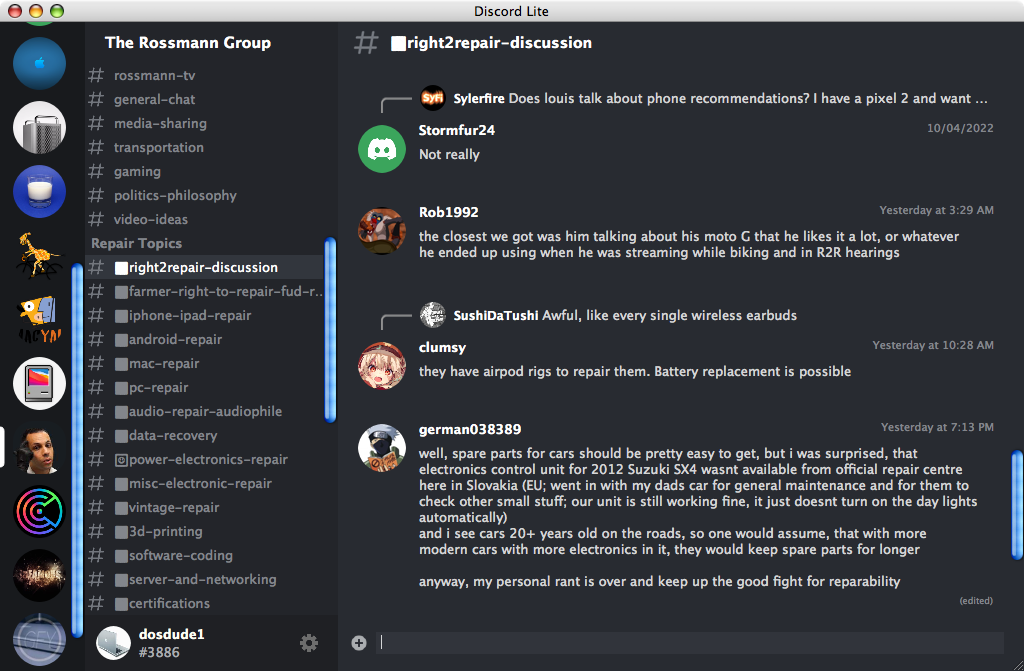- Mac OS X version 10.4 (Tiger)
- PowerPC G3 CPU
- 256MB of system memory
- Viewing and interaction in both servers and direct messages
- Sending images and attachments
- Viewing and downloading images and attachments
- Mention/ping notifications
- Pinging users
- Typing indication
- Viewing and sending replies
- URL hotlinks
- Two-factor authentication
- Captchas (in Mac OS X 10.5 or later only)
- Editing messages
- Deleting messages
(I plan to implement all the following unless noted otherwise)
- Message web embeds
- Voice and video chat
- Friend requests (will not be implemented due to Discord TOS concerns)
- As of version 0.3-alpha, a new Curl and OpenSSL-based backend for both the WebSocket and HTTP requests has been implemented. As such, the application now has full TLS v1.3 support, and once again works without the need of going through a proxy running on a newer machine.
- OS X 10.4 Tiger on Intel can only run 32-bit applications, but will try to load the 64-bit slice of the FAT binary. To work around this, you need to "thin" the binary for i386 (or remove the x86_64 slice) using "lipo".
Prebuilt Universal "Quad-FAT" binaries can be found in the Releases section. You can download and run on PowerPC, 32-bit Intel, 64-bit Intel, or ARM (Apple Silicon) Macs.
Alternatively, you can download the latest release off my website, which is loadable on the older machines.
You can use a modern Xcode version to build this application, but installing legacy SDKs and compilers is necessary using Xcode Legacy to compile for older architectures.
The following components of Xcode Legacy need to be installed:
- Compilers
- Mac OS X 10.5 SDK
- Mac OS X 10.7 SDK
Once Xcode Legacy components have been installed, the application can simply be built and run in Xcode.
Note: In order to compile a working Intel 64-bit binary for OS X 10.5 Leopard, you must either build with the 10.5 SDK itself, or use the CoreFoundation and Foundation framework binaries from the 10.5 SDK in a later SDK.
